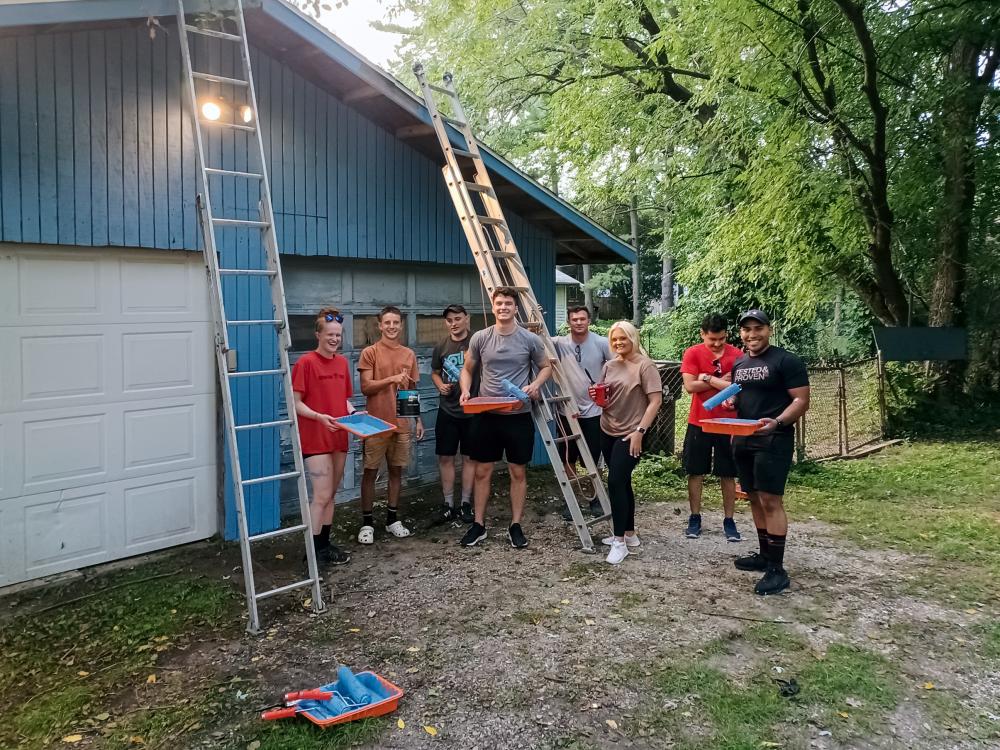DVIDS – News – NIWC Atlantic Looks to Accelerate Innovation, Signs Partnership with ‘SC Competes’
CHARLESTON, S.C. — The Palmetto Tech Bridge (PTB) announced a partnership on Dec. 2 with the South Carolina Council on Competitiveness (SC Competes) intended to increase economic competitiveness in the state and support innovation ecosystems that help develop critical capabilities for the warfighter.
The Partnership Intermediary Agreement (PIA) establishes SC Competes as an official intermediary of Naval Information Warfare Center (NIWC) Atlantic and its innovation hub the PTB.
With the agreement, SC Competes — as an extension of the tech bridge network and through collaboration opportunities with NIWC Atlantic — can support small business and academic institution partners who either need, or can make demonstrably productive use of, technology-related assistance from a federal lab.
“To accomplish our mission, NIWC Atlantic is heavily focused on advancing our collaboration with off-base entities such as academia, research institutions and leading-edge tech companies,” said Peter C. Reddy, NIWC Atlantic executive director. “With an eye toward expanding this network, we enthusiastically welcome SC Competes into PTB’s critical mission of building bridges to accelerate innovation in order to rapidly deliver solutions to our warfighters.”
SC Competes is a state-supported nonprofit corporation that manages multiple industry focus areas throughout South Carolina and links various economic ecosystems in order to foster innovation and enhance overall competition.
“Every day we see research-in-action and leading-edge technology applied to boost competitiveness within our state’s booming industry clusters,” said Susie Shannon, president and CEO of SC Competes. “This new partnership with NIWC Atlantic will expand the amazing work that our initiatives, especially SC Fraunhofer USA Alliance and SC Tech, are doing to help South Carolina thrive.”
In addition to other efforts focused on industries like aerospace, logistics and workforce development, the SC Tech initiative under SC Competes provides a unified voice for the statewide technology community by establishing South Carolina as a global hub for innovation.
For the PTB, which also collaborates with entities in neighboring states, the new partnership can lead to mutually beneficial innovations in technology through teamwork, internal modernization, intentional relationships and knowledge-sharing.
“I am very excited to welcome SC Competes as a recognized stakeholder and critical member of our Tech Bridge ecosystem,” said Erik Gardner, PTB director. “With a partner like SC Competes, the PTB seeks to widen our ability to identify dual-use opportunities in workforce and commercial solutions development that meet both national defense needs and enhance the region’s economic strength here in the Southeast.”
In conjunction with the new partnership, SC Competes plans to incorporate collaboration events as part of its SC Logistics’ Tech Talk, SC Fraunhofer USA Alliance Innovation Events and SC Tech’s SC Decoded Conference to meet and build productive partnerships.
About NIWC Atlantic
As a part of Naval Information Warfare Systems Command, NIWC Atlantic provides systems engineering and acquisition to deliver information warfare capabilities to the naval, joint and national warfighter through the acquisition, development, integration, production, test, deployment, and sustainment of interoperable command, control, communications, computer, intelligence, surveillance, and reconnaissance, cyber and information technology capabilities. Learn more at www.niwcatlantic.navy.mil.
About Palmetto Tech Bridge
Partnering with NavalX and NIWC Atlantic, the Palmetto Tech Bridge connects, reinforces and sustains the acceleration of technological ecosystems across the Department of the Navy and the broader Department of Defense. Its core focus areas are cybersecurity, assured communications and data science for the advancement of government, academia and private business technologies. Learn more at www.niwcatlantic.navy.mil/palmetto-tech-bridge/.
About South Carolina Council on Competitiveness
The South Carolina Council on Competitiveness, or SC Competes, is a nonpartisan, business-led, nonprofit organization that drives South Carolina’s long-term economic growth by managing the state’s industry clusters and providing the research, network and resources that industry clusters require to thrive. For more information, visit www.sccompetes.org.
| Date Taken: | 12.07.2022 |
| Date Posted: | 12.07.2022 16:42 |
| Story ID: | 434702 |
| Location: | US |
| Web Views: | 6 |
| Downloads: | 0 |
PUBLIC DOMAIN
This work, NIWC Atlantic Looks to Accelerate Innovation, Signs Partnership with ‘SC Competes’, by Steve Ghiringhelli, identified by DVIDS, must comply with the restrictions shown on https://www.dvidshub.net/about/copyright.


 Private Internet Access gives you unparalleled access to thousands
of next-gen servers in over 83 countries and each US state. Your
VPN experience will always be fast, smooth, and reliable.
Private Internet Access gives you unparalleled access to thousands
of next-gen servers in over 83 countries and each US state. Your
VPN experience will always be fast, smooth, and reliable.





